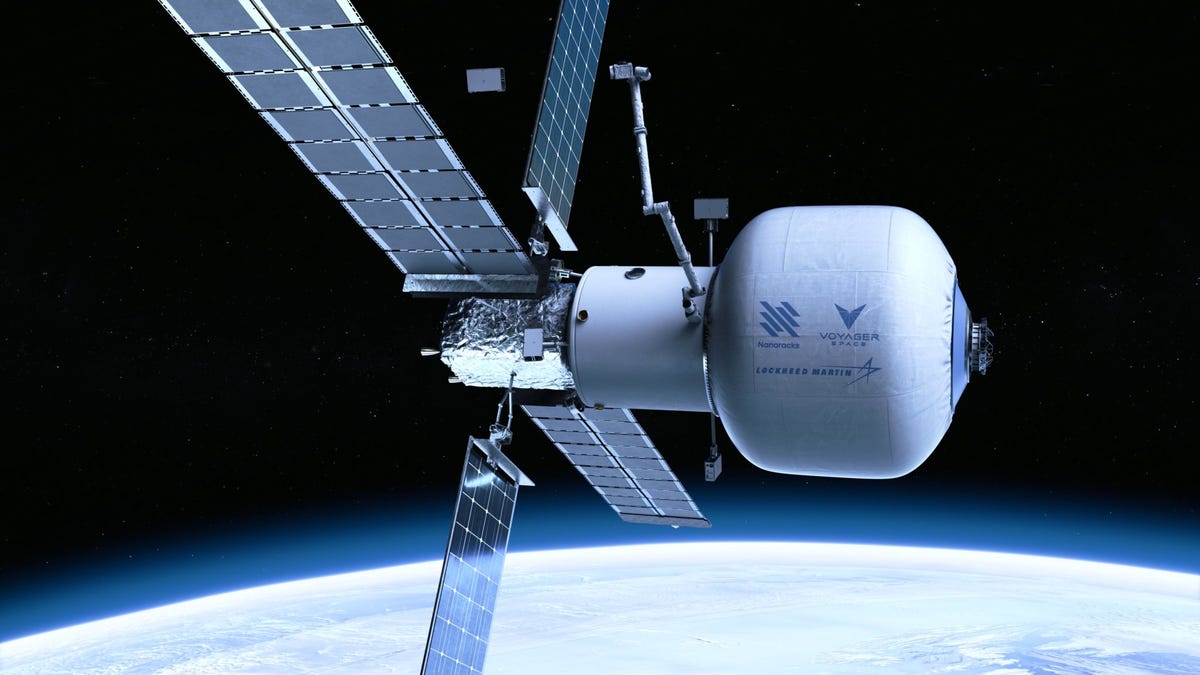Starlab, an inflatable commercial space station, could reach orbit by 2027
Nanoracks is leading the charge on what it calls "the first-ever free flying commercial space station."
The International Space Station is over 20 years old and NASA and private space companies are already looking ahead to what could come next. The next generation of space stations might look like Starlab, an orbital research facility announced by Nanoracks on Thursday.
The commercial space company is leading the Starlab development effort with an assist from its majority shareholder Voyager Space and Lockheed Martin, a company with a long history in spacecraft development. Starlab will be designed to host four astronauts. Nanoracks aims to have it operational by 2027.
"The basic elements of the Starlab space station include a large inflatable habitat, designed and built by Lockheed Martin, a metallic docking node, a power and propulsion element, a large robotic arm for servicing cargo and payloads, and a state-of-the-art laboratory system to host a comprehensive research, science , and manufacturing capability," Nanoracks said in a statement.
Nanoracks might not have the name recognition of a Boeing or a Lockheed Martin, but it's been deeply involved in everything from launching small satellites from the ISS to designing possible future space hotels.
Orbital space is full of business potential, from filming movies to aging whiskey to conducting medical and materials research. Nanoracks sees opportunities for working with governmental space agencies and private companies and for hosting space tourists.
Earlier this year, NASA requested industry input on its Commercial LEO Destinations project. "The agency's goal is a low-Earth orbit marketplace where NASA is one of many customers, and the private sector leads the way," the space agency said in March.
There's a long road between announcing a space station and launching one. The interest in space as a research and tourism hub means Nanoracks likely won't be alone in the race to operate new habitats for humans in orbit. There may even be a luxury hotel up there by then.


